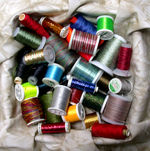Finding Forrester
A movie about writing and transformation I don’t usually write about movies here but I stumbled across this movie last weekend and I find myself thinking about it this afternoon more than any particular piece of writing. The movie is about a young African-American man, Jamal Wallace (played by Rob Brown) who meets a reclusive writer, William Forrester (played by Sean Connery). It’s a feel-good movie, directed by Gus Van Sant, who also directed Good Will Hunting. (Personally, I like Finding Forrester better). The essence of the movie is this: Jamal meets William, they develop a mentor-student relationship, and both lives are changed. I won’t elaborate on the plot here, or give away the ending. I do think the movie is worth a look. Perhaps what’s most relevant here is a writing exercise that Forrester gives to Jamal. He sits the young man down at a typewriter and tells him to begin writing. Then Forrester waits. Nothing happens. No keys are clicking. Silence. Eventually, what Forrester does is to go get an old essay of his own and he tells the boy this (paraphrased from memory): Start with my words—type those—and then when you’re ready start typing your own. I like that a lot. That connection between reading and writing. Not just reading in order to begin writing—but actually beginning to take someone’s words on—at the level of the fingers—keying them in—and using that as a bridge into one’s writing. Choosing a passage that has the right rhythms—the rhythms one wants perhaps in one’s own writing—and beginning with those words. Hearing them in one’s head as one keys them in—and then at some point taking off on one’s own, like a swimmer going off into the water without being held up by someone else’s hands. It seems like such a simple idea, but I don’t think I’ve ever actually tried it. I think I...
read more
